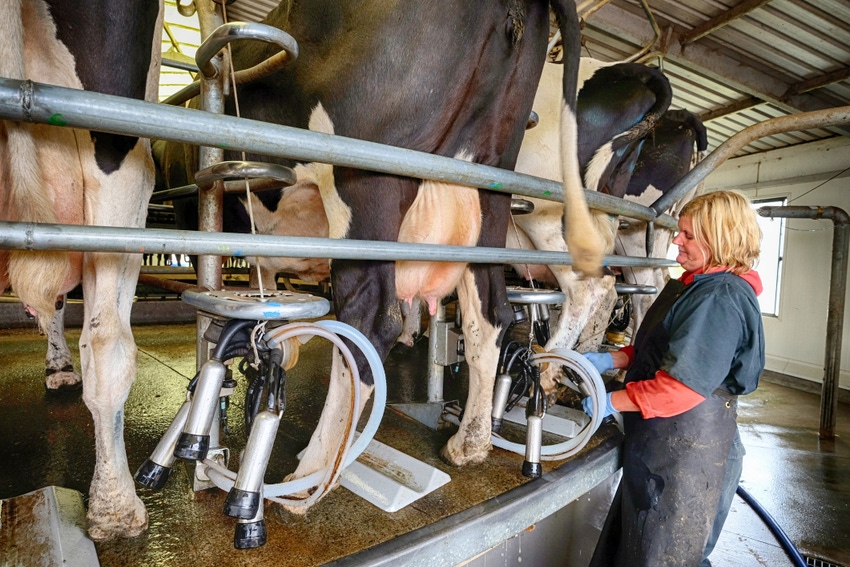Economist suggest 2020 will be a better year for dairy sector.

Milk production in the 24 major milk states during October totaled 17.3 billion lb., up 1.7% from October 2018, according to the U.S. Department of Agriculture’s latest “Milk Production” report. The September production numbers were also revised to 16.8 billion lb., up 1.7% from September 2018. The September revision represented an increase of 7 million lb., or less than 0.1%, from last month's preliminary production estimate.
Production per cow in the 24 major states averaged 1,964 lb. for October, 33 lb. above October 2018, while the number of milk cows was 8.81 million head, 1,000 head less than October 2018 but 5,000 head more than in September 2019.
Total milk production in the U.S. during October totaled 18.1 billion lb., up 1.3% from October 2018. Production per cow in the U.S. averaged 1,941 lb. for October, 33 lb. above October 2018. The number of milk cows on farms in the U.S. was 9.33 million head, 40,000 head less than October 2018 but 5,000 head more than September 2019.
Improving outlook
According to the National Milk Producers Federation (NMPF), dairy producers have been seeing the highest prices in five years in the latter months of 2019. Balance sheets have also been improving as a result of federal assistance from the new Dairy Margin Coverage program, NMPF noted.
“The September USDA survey prices of cheddar cheese and nonfat dry milk -- $1.91/lb. and $1.05/lb., respectively -- were the highest these prices had been since the end of 2014. The August U.S. average all-milk price of $18.90/cwt. is as high as this reported price has reached during the same period,” NMPF said.
As for the 2020 outlook, University of Wisconsin dairy economists Bob Cropp and Mark Stephenson recently suggested that the dairy sector’s future look brighter.
Futures are stronger, cheese sales have been good and exports have been strong, they noted.
A bright spot in the market is that nonfat dry milk seems to be gaining, Stephenson said, adding that whey has also been strengthening.
“We’re going to end this year about $2.20 higher average than we did in 2018,” Cropp said of the Class III milk prices.
Looking down the road, the futures have been more optimistic, Cropp noted.
“I don’t see milk production coming on very strong. I look for demand for cheese to stay pretty good and exports to do a little better,” he said.
Cropp projected that Class III milk prices will be in the “pretty strong $17s for the first half, with some $18s in the second half.”
“This is a good year, and next year is likely to be somewhat better,” Stephenson said.
About the Author(s)
You May Also Like





